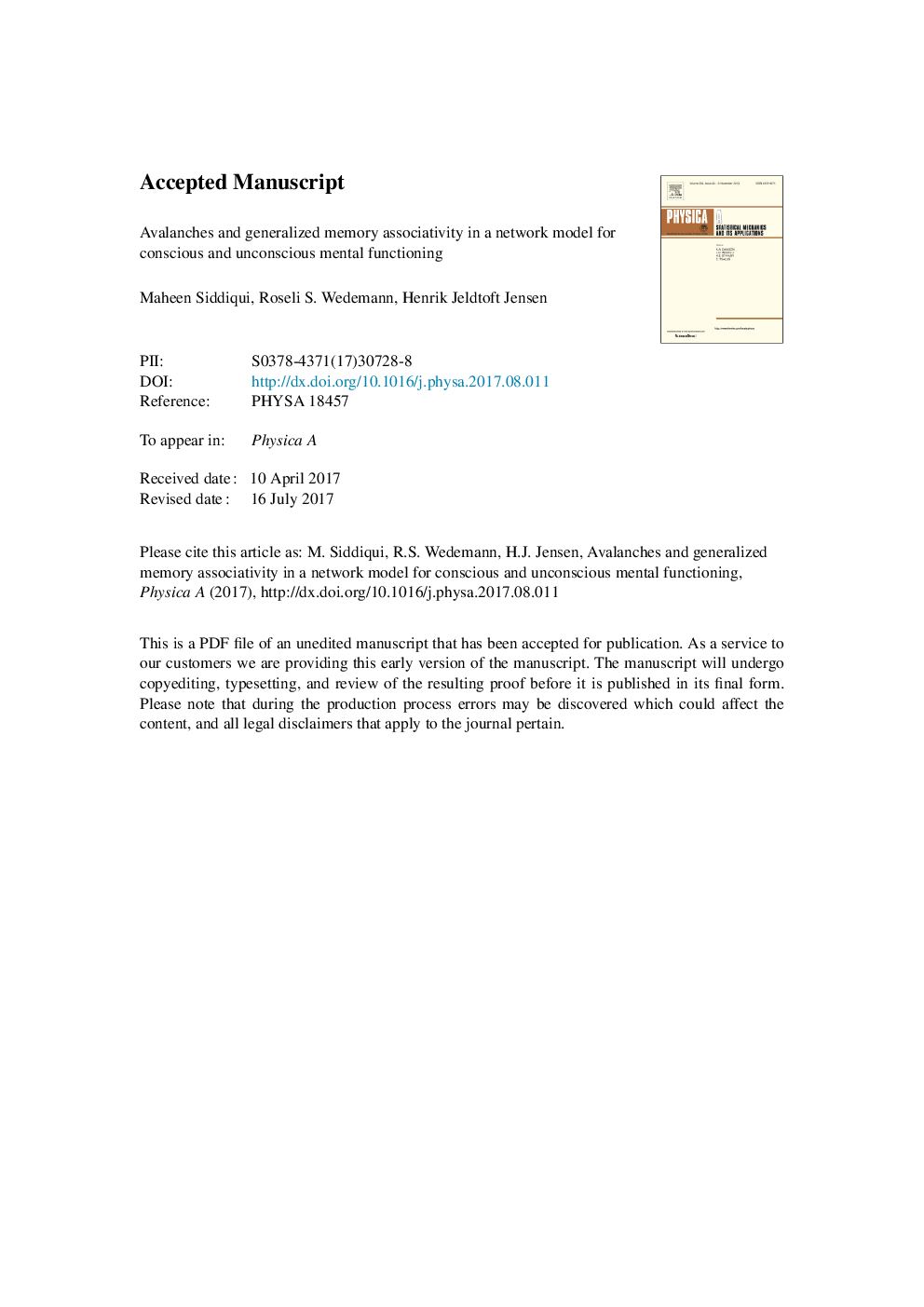ترجمه فارسی عنوان مقاله
لابی ها و وابستگی حافظه به طور کلی در یک مدل شبکه ای برای عملکرد ذهنی آگاه و ناآگاهانه
عنوان انگلیسی
Avalanches and generalized memory associativity in a network model for conscious and unconscious mental functioning
| کد مقاله | سال انتشار | تعداد صفحات مقاله انگلیسی |
|---|---|---|
| 158311 | 2018 | 30 صفحه PDF |
منبع

Publisher : Elsevier - Science Direct (الزویر - ساینس دایرکت)
Journal : Physica A: Statistical Mechanics and its Applications, Volume 490, 15 January 2018, Pages 127-138
ترجمه کلمات کلیدی
آگاهی از ناخودآگاه، نوروزها، شبکه های عصبی خود سازمان یافته، ماشین بولتزمن، آنالیز شبیه سازی عمومی لاین ها،
کلمات کلیدی انگلیسی
Consciousnessâunconsciousness; Neuroses; Self-organized neural networks; Boltzmann machine; Generalized simulated annealing; Avalanches;

